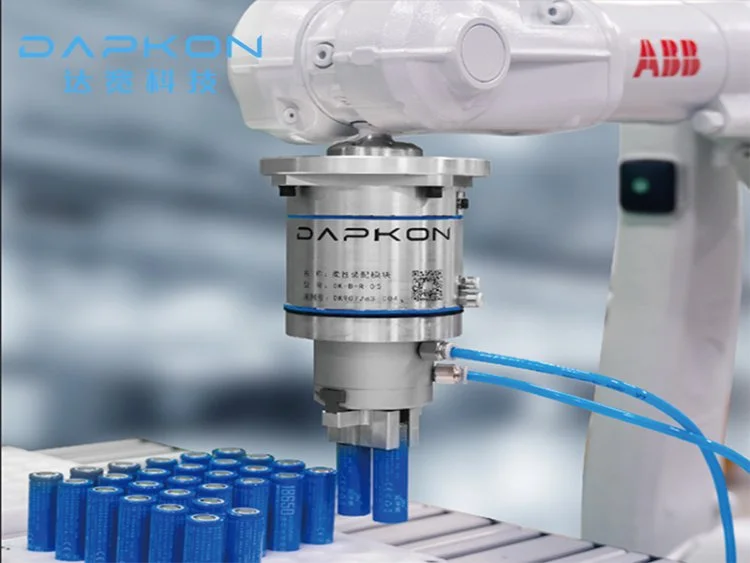- This topic is empty.
-
AuthorPosts
-
2025-03-31 at 3:13 pm #8652
With the rapid development of the global automotive industry, the innovation of manufacturing processes and the improvement of production efficiency have become the focus of the industry. In the traditional automobile manufacturing process, the flexibility, efficiency, and quality control of the production line are often limited by human resources and production equipment. However, the emergence of flexible assembly automation has provided a revolutionary solution for the automotive manufacturing industry. It not only greatly improves production efficiency but also reduces production costs while improving the flexibility of the production line and product quality.
In this article, we will explore the application of flexible assembly automation in automobile manufacturing, analyze the technological innovation and industrial changes it brings, and its practical applications in the automobile manufacturing industry.
1. Overview of flexible assembly automation
Flexible assembly automation is a production mode that integrates automated assembly technology, robotics, artificial intelligence, and Internet of Things (IoT) technology. The core feature of this system is its flexibility, that is, it can adapt to different types of parts and assembly tasks, and quickly adjust the production line to meet the production needs of different models. This highly flexible production mode enables enterprises to reduce resource waste in the production process and optimize production process while ensuring production efficiency.
2. Challenges and needs of the automotive manufacturing industry
The automotive manufacturing industry is a typical labor-intensive industry. Traditional production lines not only require a lot of manual participation but also often rely on fixed production processes and equipment. This traditional model can meet the needs of large-scale, single-model production, but it cannot cope with the rapidly changing market demand and diversified consumption trends.
Diversified model requirements: With the increase in consumer personalized needs, automakers have to face the challenge of multi-model and multi-specification production. This requires the production line to have higher flexibility and be able to quickly switch production modes.
Production efficiency and quality: The traditional manual assembly method is inefficient and limited by human factors, and product quality is susceptible to fluctuations. Improving production efficiency and quality consistency has become an urgent need for modern automakers.
Cost control and environmental protection requirements: In the context of increasingly fierce global competition, reducing production costs, saving resources, and reducing waste emissions have become an inevitable choice for automakers.

3. Technical advantages of flexible assembly automation
Flexible assembly automation brings a series of technical advantages to the automotive manufacturing industry, making it the preferred solution for automakers.
Efficient production capacity: The flexible assembly system can quickly switch between different production tasks, which enables it to maintain efficient operation in the production of multiple models. Through the intelligent control system, the production line can be adjusted in real time, reducing conversion time and cost.
Precise quality control: The automation system can not only reduce the errors caused by human operation, but also monitor and adjust in real time during the production process to ensure the assembly quality of each product. This precise quality control not only improves product consistency but also reduces the rework rate.
Flexible production line configuration: The flexible assembly automation system can be flexibly adjusted according to production needs to meet the assembly requirements of different models and products of different specifications. Through modular design, the production line can be configured according to different product requirements to maximize the use of production resources.
Save costs and improve production efficiency: By reducing manual operations, the flexible assembly automation system significantly reduces labor costs. At the same time, automation technology can optimize production processes, improve production efficiency, and shorten production cycles.
Intelligent production and data analysis: Unlike traditional production lines, the flexible assembly automation system integrates advanced sensors and data analysis technologies, which can monitor the production process in real time, collect and analyze production data, and further optimize production decisions.
4. Application of flexible assembly automation in automobile manufacturing
In the automobile manufacturing process, flexible assembly automation is mainly used in the following aspects:
Body assembly: Body assembly is one of the most complex and sophisticated links in automobile manufacturing. Traditional car body assembly relies on a lot of manual operations, while the flexible assembly automation system can quickly and efficiently complete various car body assembly tasks through robotic arms, automated tools, and other equipment. Whether it is welding, painting, or parts installation, the flexible assembly automation system can achieve high-precision and high-efficiency operations.
Engine and chassis assembly: The engine and chassis are core components in automobile manufacturing, and accurate assembly is essential for the performance of the car. Through flexible assembly automation, automakers can achieve precise matching of the engine, chassis, and body to ensure that every engine and chassis can fit perfectly.
Interior and electronic system installation: With the increasing complexity of automotive interiors and electronic systems, traditional manual assembly methods can no longer meet the needs of high precision and high efficiency. The flexible assembly automation system can achieve precise installation of complex components, such as in-vehicle electronic systems, seats, and dashboards, through intelligent assembly and flexible deployment of robotic arms.
Automated inspection and assembly of automotive parts
In the process of automobile manufacturing, the quality of each component is crucial. The flexible assembly automation system can realize automated inspection of components to ensure that all components meet quality standards. In addition, the automated assembly system can perform precise verification at each assembly link to avoid human errors. The application of flexible assembly automation in automobile manufacturing represents the future trend of modern automobile production. It not only improves production efficiency by integrating intelligent technology and highly automated assembly systems, but also provides automobile manufacturers with higher production flexibility and quality control capabilities. With the changes in market demand, flexible assembly automation will play an increasingly important role in future automobile manufacturing.
For automobile manufacturers, choosing the right flexible assembly automation supplier and flexible assembly automation manufacturer is an important step to improve production capacity, reduce costs and achieve intelligent manufacturing. Through technological innovation and system optimization, flexible assembly automation will become an indispensable key factor in the global automobile manufacturing industry.
As a professional flexible assembly automation company, we are committed to providing advanced automated assembly solutions for the automotive manufacturing industry. With our deep technical strength and rich industry experience, we tailor flexible and efficient production lines for our customers to help companies maintain their leading position in the fierce market competition.
http://www.dapkon.ai
Shanghai Dapkon Technology Co., Ltd. -
AuthorPosts
- You must be logged in to reply to this topic.
